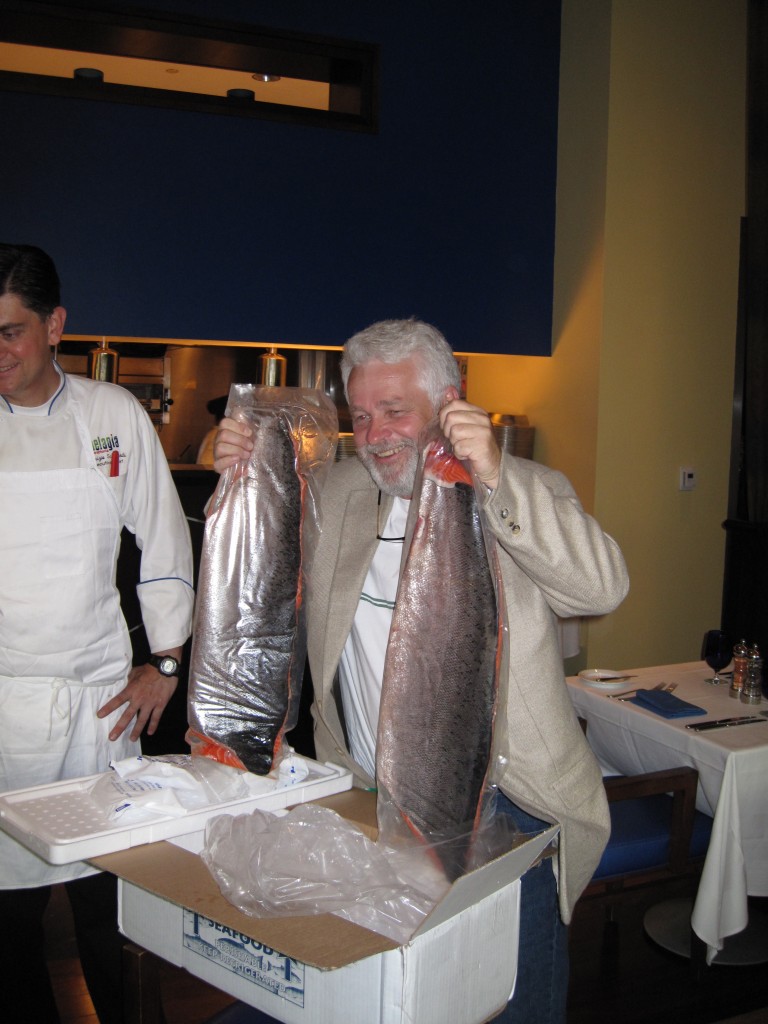
On my way to Tampa from Anchorage with a couple of salmon fillets. It is tradition that if you travel to someone’s house you bring them something from your home. The salmon was a hit – the chefs at the dinner did a great job with it.
I grew up in Ketchikan, Alaska – the Salmon Capital of the World. But most of you know it as the first port of call when you take the cruise to Alaska. What you may not know, is the history of salmon in Ketchikan is complex.
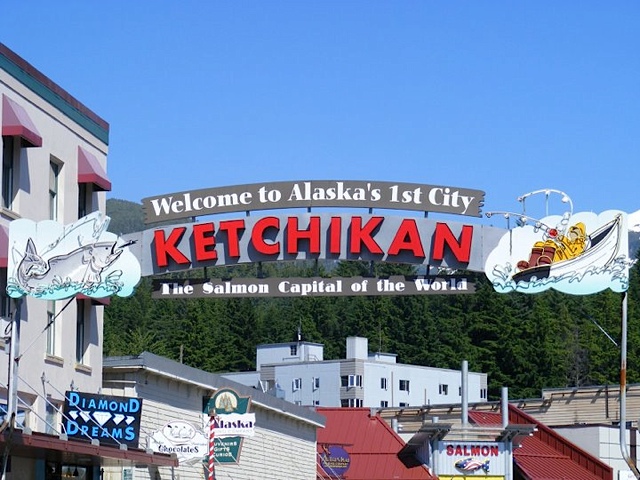
Growing up in the salmon capital of the world
So I have been eating salmon and fishing for salmon since I was a small fry myself.
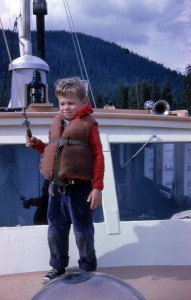
Growing up in Alaska there were two fun things about salmon: catching them and eating them. Here I am on a boat ready to fish
Ketchikan was founded because of a cannery that was built along Ketchikan Creek in 1886. More canneries came to the area because it was easy to catch salmon with fish traps. These were traps that would get almost all the fish going upstream to spawn. By 1936 Ketchikan canneries had over 1.5 million cases of canned salmon exported to the lower 48 states.
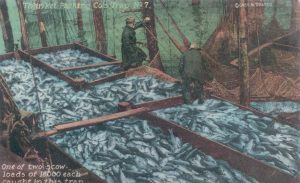
The amount of fish these traps could catch during a salmon run was unbelievable
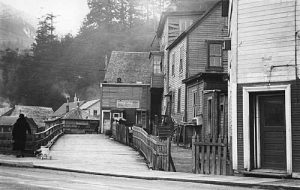
Ketchikan Creek – and Creek Street – where the fishermen and fish went to spawn
With seasonal workers for the canneries came other workers – and their houses were along Creek Street. The most famous of these is now a museum – Dolly’s.

I was once in a restaurant in Oregon and found this painting of Creek Street so I had to buy it.
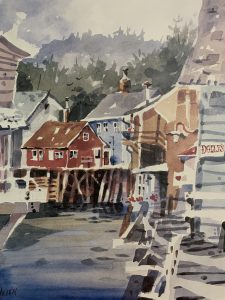
Long before it was a museum, Creek Street had become a shabby run-down part of Ketchikan. Tourism has brought it back.
Ketchikan went from a town of cannery workers to a town of fishermen. All because the canneries were unpopular. They were owned by Seattle money, and employed workers for a dollar a day (Dolly charged $3 to entertain someone).
But the fish traps were blamed for the decrease in harvest of salmon and canneries closing. In fact, the taste of Americans had changed away from canned salmon and more to a fresher fish. But the fish populations decreased so much that in 1953 President Eisenhower declared that SE Alaska was a disaster area.
In 1959 Salmon traps were outlawed, and fishermen could begin to catch their fish. Salmon fishing became both a popular sport as well as a cottage industry and fish were caught from boats with nets or lines. The state began a program of fish hatcheries to restock vital streams.
What the state never looked at was the effect of the ocean on salmon runs. Other than increasing the international border for fishing, and stopping foreign ships with their long nets from taking salmon, very little attention has been paid to ocean warming, acidification, and areas of low oxygen.
Most salmon is caught, flash-frozen, and packaged. About 80 per cent of that salmon is sent to Asia to be processed and never returns to Alaska. As a result, only about ten percent of the salmon consumed in the United States comes from Alaska, while most is farm raised. Most farm raised salmon is imported from Canada, Chili, or Norway.
Differences Between Wild Salmon and Farm Raised
(1) Wild Salmon has fewer calories than Farm raised (281 vs 412 for 1/2 fillet). Link here and here
(2) Wild salmon has a better Omega-3 to Omega-6 ratio 1:10 vs 1:3-4. Link here .
The Omega-3 and Omega-6 fatty acids come for your diet and are a polyunsaturated fat. You need both in your diet. But the balance should be in favor of Omega-3 fatty acids, as it is in Wild Salmon. Omega-6 while necessary – too much lead to increased inflammation. While Farm raised salmon is still good, compared to most foods, it is far from superior. Link here.
(3) Farm raised salmon has a higher level of polychlorinated biphenyls (PCB’s) and pesticides than wild Alaska Salmon. While these pollutants have decreased over the years, one can safely eat wild salmon daily, but Farm raised salmon should be limited to less than twice a week. Report here
(4) Large antibiotic use in Farm Raised Salmon, which has decreased over time, but still an issue.
(5) Taste – wild Alaska Salmon has a unique taste, and because it has more muscle than Farm raised, it will be sweeter- especially if eaten right after it is caught.
